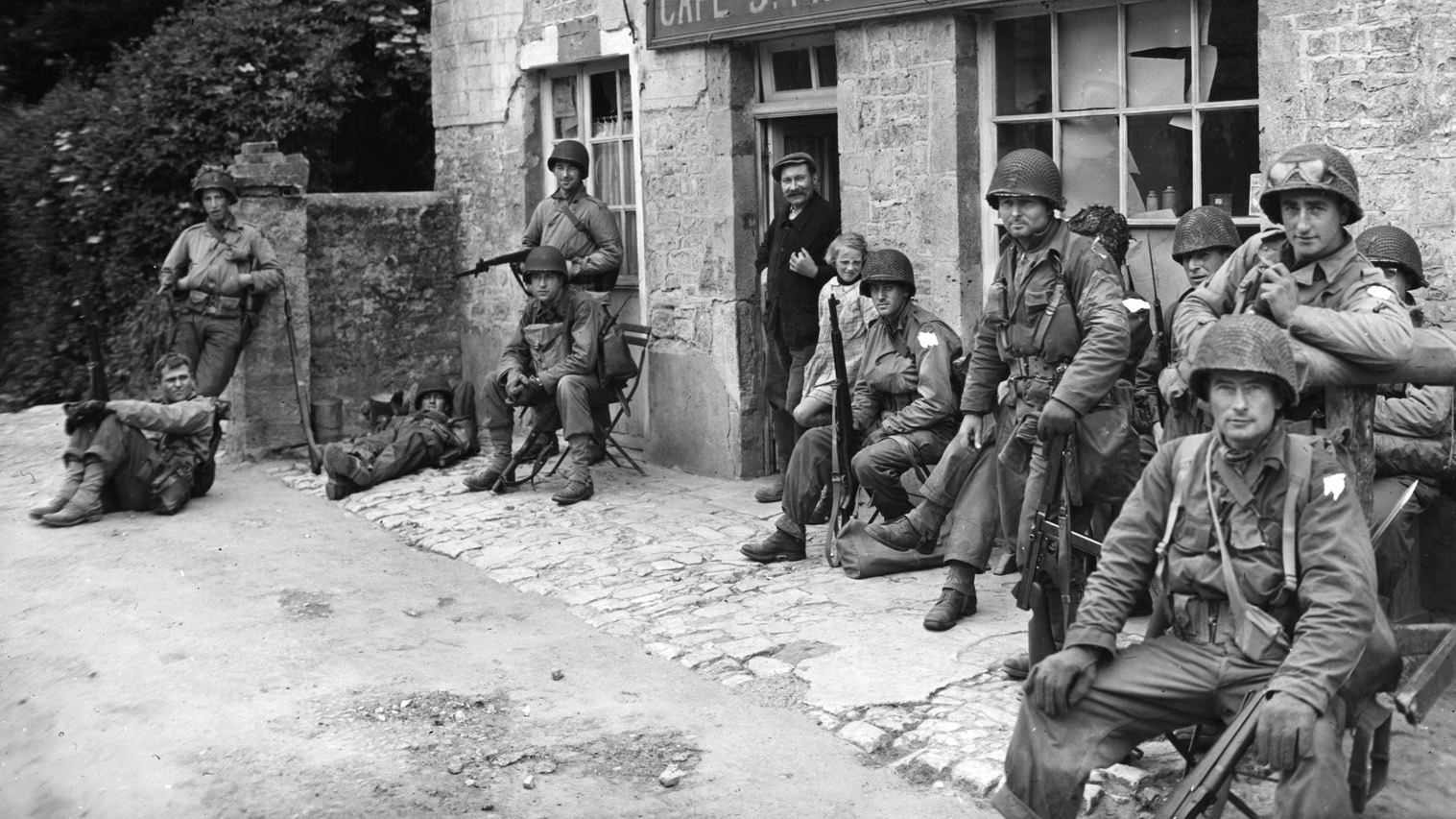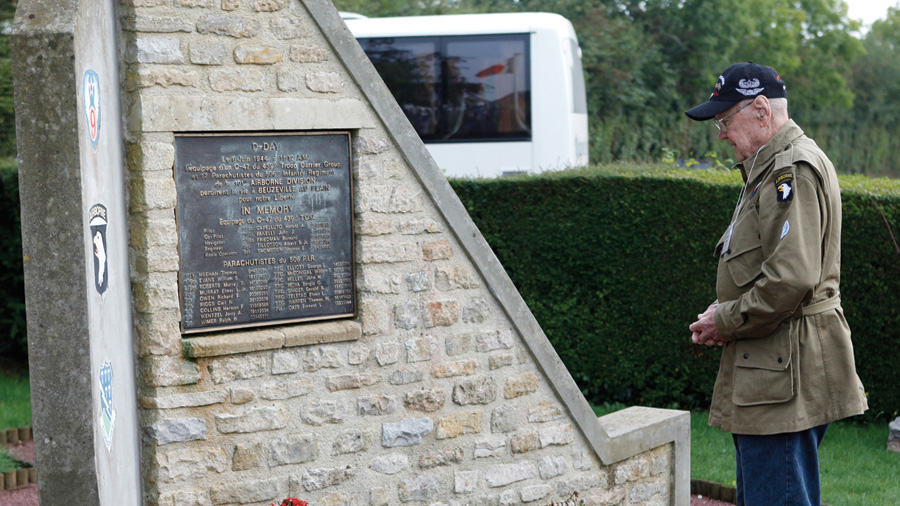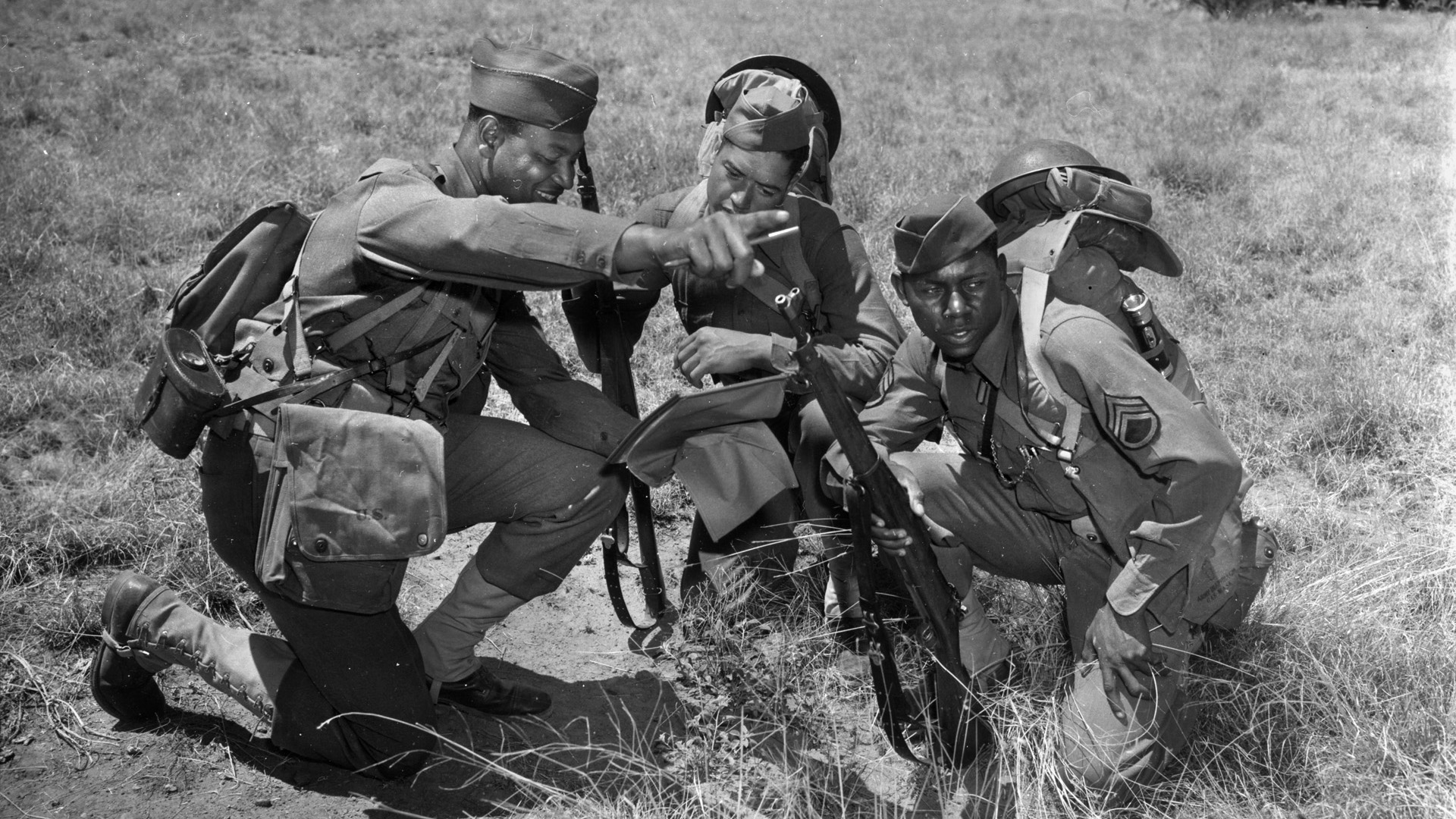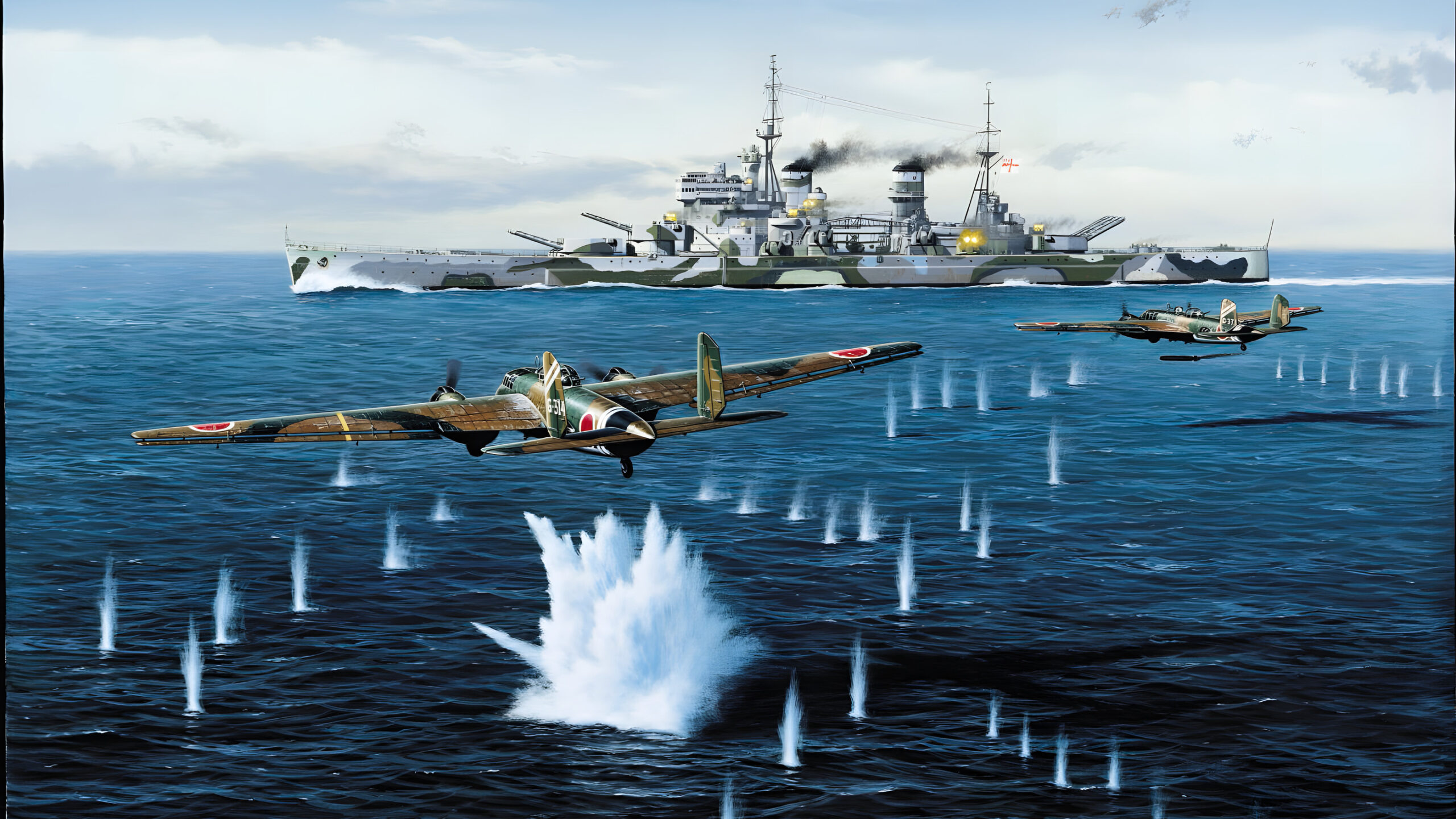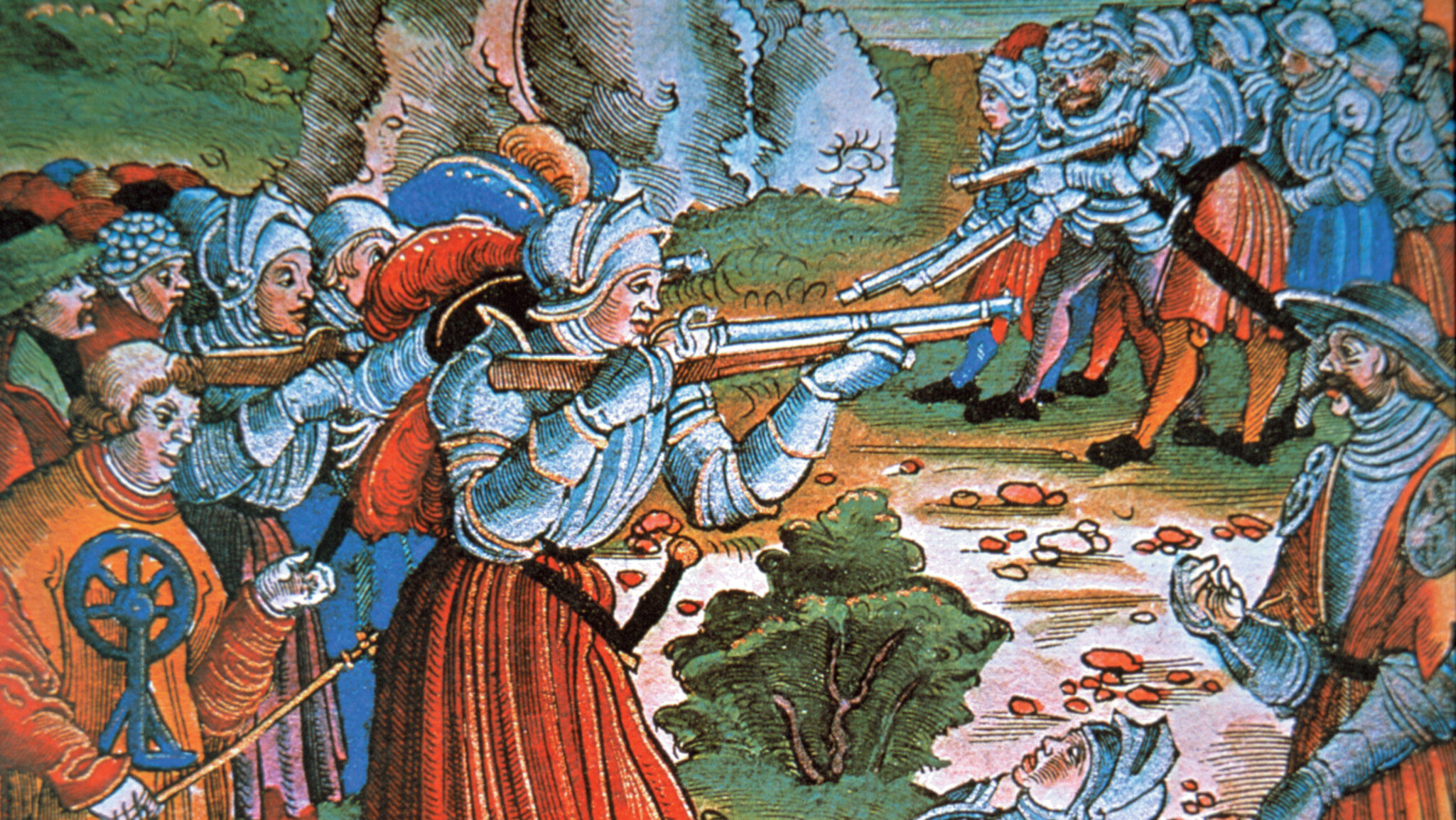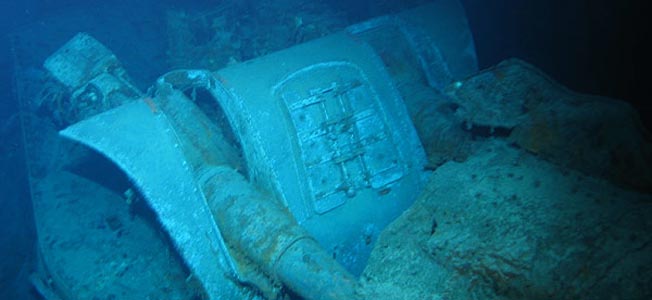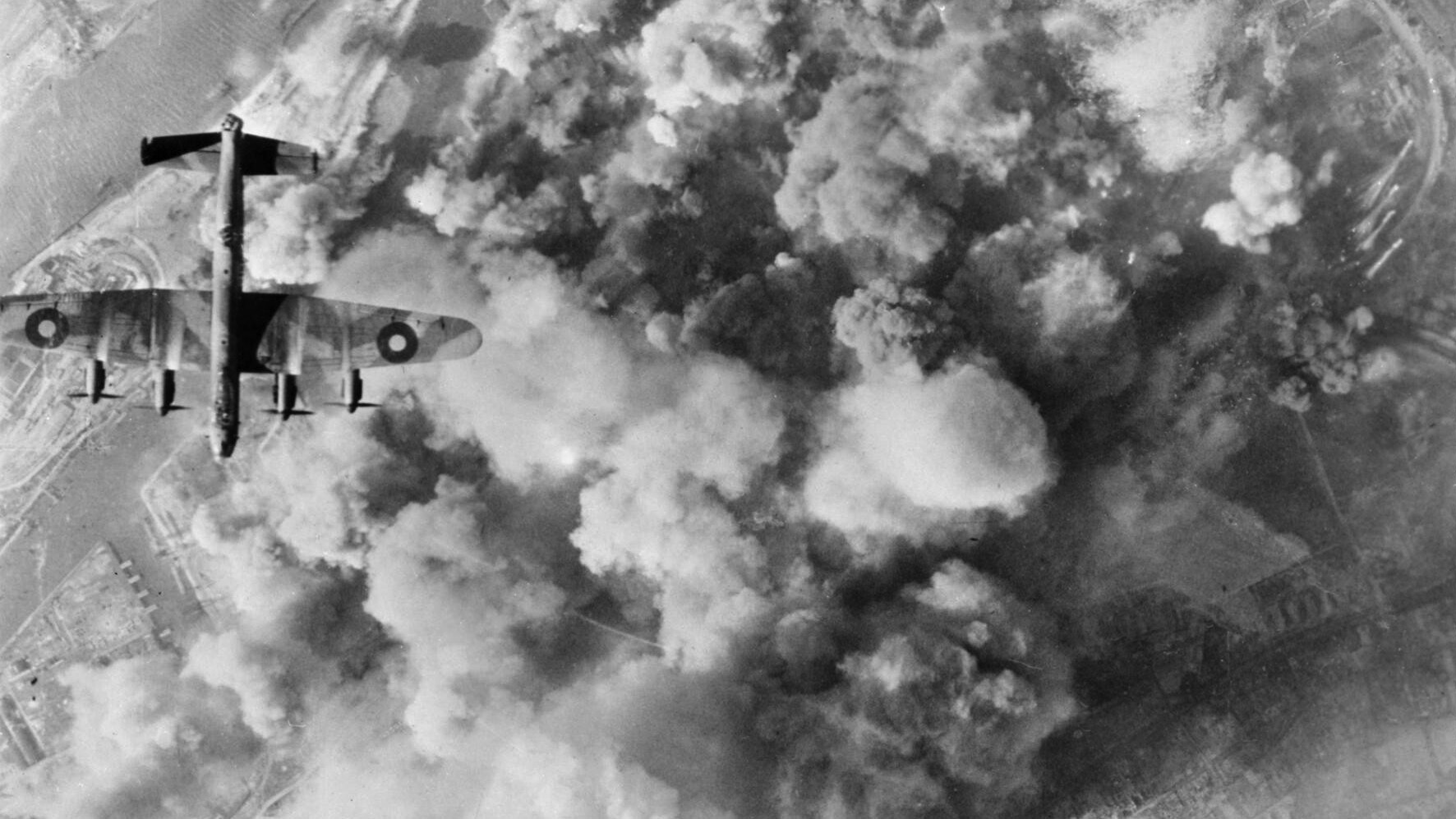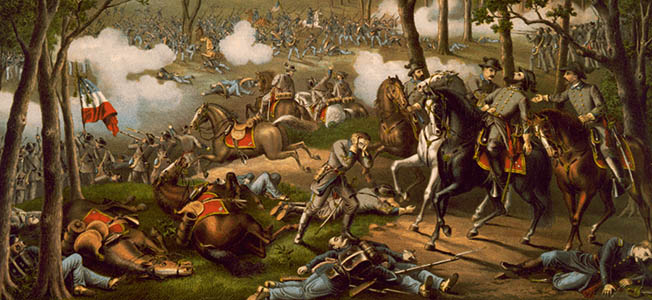By Connie Kennedy
“Oui.” It was one of the few words 101st Airborne paratrooper Norwood Thomas knew in French, and it served him well on the morning of June 6, 1944. After he assisted in the clearing of Causeway No. 1, which led off Utah Beach in Normandy, Norwood spotted a pub in the town of Pouppeville and decided that “the war was over.”
Thomas and another soldier went in for a drink to celebrate, and the French bartender asked in broken English if the American forces were in St.-Mere-Eglise. They answered, “‘Oui!” and received a shot of brandy. The bartender asked about another French town, and the soldiers again replied, “Oui!” and another shot was poured. This continued for eight or more towns with the soldiers replying, “Oui!” The “Oui” festival ended abruptly when a lieutenant entered and ordered the men to move out.
Some 21/2years earlier, Norwood had been working at an auto shop in Durham, North Carolina, when he heard about the Japanese attack on Pearl Harbor on the radio. “I was a typical kid, ignorant of politics,” said Norwood, just 19 years old at the time of the attack. “But all I knew then was that I wanted to bomb them back to eternity.”
Norwood believed that the war would last only two weeks. “I had no idea of how much our resources lacked militarily speaking at the time of the war,” he said. “We had just come out of the Great Depression where I had nothing, so looking back, it shouldn’t have been a surprise. But it was.” The United States had no shortage of men willing to fight as recruiting centers were bursting at the doors and lines were down the block. “Kids lied about their age just to get a chance to fight,” Norwood remembered.
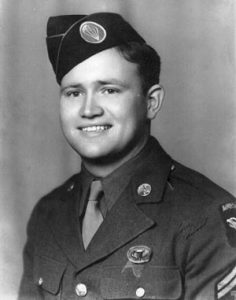
On March 16, 1942, Norwood enlisted in the Army. He was later assigned to the 82nd Infantry Division. Since he had worked in the auto shop, he was assigned to the signal company and worked in the motor pool. In October 1942, the 82nd Infantry Division became the first airborne division in the U.S. Army. The 82nd Airborne Division was then split into two divisions, and Norwood, along with half the men, was assigned to the newly created 101st Airborne Division. During training at Fort Bragg, North Carolina, two officers from Fort Benning, Georgia, arrived on base and asked for volunteers to be paratroopers. Norwood, anxious to do something new and earn extra pay, raised his hand. He joined a group of about 150 men in a physical endurance test.
“They ran us until our tongues hung out,” said Norwood. “I swear mine was by my belt buckle when we finally stopped.” The survivors of the exercise fell back into formation and were asked again who wanted to be a paratrooper. Norwood raised his hand and dropped to do push ups. “Men were dropping out, and those who could keep going, did,” he said. Approximately 16 men remained and were sent off to Fort Benning to complete the five-week Jump School.
Airborne training was arduous. Jump School consisted of physical training, parachute education, tower jumps, and five active jumps to receive the coveted jump wings. Active jumps were live from an airplane at regulation altitude. The training was difficult. “It was like they didn’t want just anyone there,” recalled Norwood. “They were very hard on us because we had to be good. We had to be great.”
Norwood completed his program successfully and proudly wore his jump wings and bloused his pant legs into his boots before heading back to Fort Bragg to join the 101st. Paratroopers were identified by the bloused pant legs tucked into their boots as they were the only units allowed to do this to their uniforms. He was assigned to division artillery headquarters with 25 paratroopers and 125 glider men. Norwood became a division radio operator. After attending signal code school, he was part of a communications network to direct fire during combat. A benefit of training at Fort Bragg was its location close to his family home. He was able to visit during weekend leave.
Training continued throughout the next year and a half. “Soldiers trained hard without equipment,” said Norwood. “They would do training exercises with a rifle that had been given to the soldiers only for that day, turning in the rifle at the end of each training [session] during those months. The word ‘TANK’ was painted on the side of a truck to simulate combat in a training exercise.”
In September 1943, the 101st Airborne Division deployed to England. Norwood boarded the transport RMSStrathnaverand endured an inglorious start to his wartime experience. “The ship broke down three times” he said. “We had to stop in Newfoundland for repairs, only to strike a large rock when leaving the harbor.” The men were then placed on another ship to complete the journey to England. It took 45 days to get there.
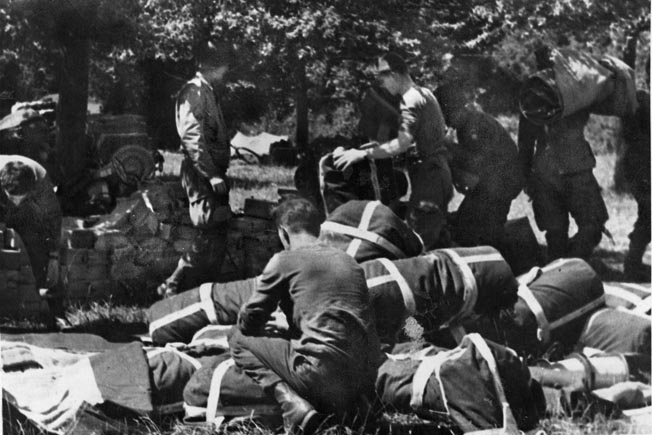
The division artillery headquarters was billeted in a large mansion at Benham Commons. The men slept 12 to a room while other soldiers lived in stables or other rustic buildings on the property. A regular day for Norwood was a five-mile run, calisthenics, and classes on weapons, field tactics, and first aid. Once a month the men would complete a three- or four-day training exercise simulating battle conditions. “The 101st was a well-oiled machine, and we were ready to fight.” Norwood said.
After days of studying maps and sand tables and continuing jump preparation, the order came that D-Day was to take place on June 5, 1944. The men moved from Benham Commons to a makeshift airfield and set up camp to await the jump. There, the men ate like kings. They dined on steaks, pork chops, real mashed potatoes, fresh eggs, and vanilla ice cream. “Oh, I ate! It was good!” said Norwood. Due to stormy weather over the English Channel, the initial jump was postponed. Many anxiously returned to their tents and sleeplessly wondered if the order would come again the next day. It did, so the men gorged themselves again on all of the abundant food.
Norwood equipped himself with a .30-caliber M-1 carbine, 12 clips of ammunition, and three days of K-rations. His radio equipment would be attached to the airplane’s fuselage and dropped separately. Once he finalized his equipment, he waited for the order to load up.
Trucks arrived during the day on June 5 and dumped piles of prepacked parachutes onto the ground. The men picked a parachute and loaded up. As Norwood was putting on his chute, he noticed General Dwight D. Eisenhower, Supreme Commander Allied Expeditionary Force, approaching. Eisenhower had come to the airfield to wish the men well. He stopped in front of Norwood and asked, “Were you issued a parachute by serial number as you were with the rifles?” Norwood replied, “No sir. The chutes were dumped off of that truck over there.”
Eisenhower thanked Norwood and continued down the line, talking with the men. For Norwood, this was a great moment. “It was good to see him there with us.”
At 10:30 pm, Norwood boarded his plane and saw Brig. Gen. Anthony McAuliffe, the division’s artillery commander, settling in. Once the plane took off, some men got sick, some slept, and some prayed. “I didn’t smoke, and I didn’t take the pill they were passing out to help with air sickness,” said Norwood. “I was wide awake because I wanted to be wide awake.”
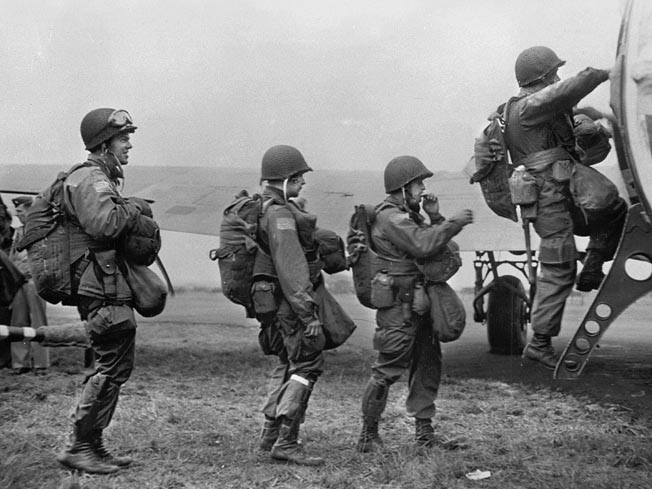
The flight was pretty smooth until the plane reached the Cotentin Peninsula and began taking German antiaircraft fire. Norwood was in position number four for the jump. He heard the Jump Master order, “Stand up, hook up.” Each man rose when they heard the order, “Sound off for equipment check.” They checked the parachute harness and ring that connected to the stack line of the man in front of them. The stick filled with shouts and, in turn, Norwood said, “Number four, ok!” During training, the paratroopers were instructed to count 1,000, 2,000, 3,000 while jumping as the parachute would inflate after the word “3,000.” On D-Day, the men were permitted to say “Bill Lee” instead to honor the former commanding general of the 101st.
Norwood jumped from an estimated altitude of 400 feet, swayed two times, and landed in a field at 1:23 am near the French village of Brucheville. He landed in Drop Zone C, two miles south of the town of St.-Marie-du-Mont and cut himself free from the parachute. He saved a piece of it and tucked it into his uniform pocket.
Norwood never saw the fires burning from the town of St.-Mere-Eglise as he landed just south of the town. He could not find a familiar face from the 101st in the field where he landed. He looked for soldiers to help set up division artillery headquarters. He ran into a pathfinder, who pointed his rifle to Norwood’s chest and challenged him. The pathfinder believed the 101st was being held in reserve in England. He highly doubted Norwood’s explanation that he was a paratrooper with the 101st. After a heated exchange, the pathfinder escorted Norwood to his lieutenant to verify whether Norwood had told the truth. Norwood walked in front of the pathfinder until they reached the lieutenant, and then he told the officer his name, unit, and rank. The lieutenant verified that the 101st did indeed jump into Normandy that morning. The pathfinder escorted Norwood back to his landing site, and they parted ways.
Shortly afterward, Norwood saw his first familiar face. Julian Necikowski, a radio operator who had trained with Norwood, passed by. Norwood asked him to help find radio equipment, and Julian stated that he was ordered to secure the landing area for gliders and had to continue on to complete his mission in time.
Norwood next came across some members of the 3rd Battalion, 501st Parachute Infantry Regiment in the early morning of June 6. The unit had been ordered to clear Causeway No. 1 leading off of Utah Beach so that the infantry arriving that morning could move inland. Norwood was ordered to join the mission, and so he took three rounds of ammunition and his rifle to begin the work. He shot at many German soldiers that morning, most within 100 yards. “I did not feel like I was shooting at a human” he recalled. “I felt like he was an object.” Norwood also thought to shoot at the insulators on telephone poles to interfere with German communications, thanks to his knowledge of radio communications. They made a popping sound when shot. Causeway No. 1 was cleared successfully by 10 am.
Norwood then received orders to continue to Heisville to establish division artillery headquarters. He found his radio equipment in a field the next day when he used a homing device. Half drunk from the multiple shots of brandy at the French pub in Poupeville, he made his way across the Norman countryside, climbed through hedgerows, and walked in roadside ditches. Later in the day, Norwood and some men took a quick rest. He opened a K-ration from his pack and noticed it was dated 1934 and contained a can of dried eggs with meat, dry biscuits, a small fruit bar, a packet of Nescafe coffee, and three or four lumps of sugar. The freeze-dried coffee fascinated Norwood since he had never seen it before. He was also astounded that the meal he was eating was 10 years old.
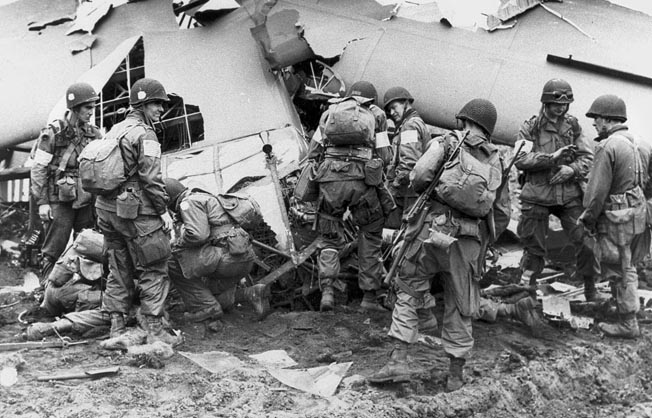
Over the next few weeks, Norwood joined with more of his unit. The 17 headquarters personnel who had jumped on D-Day did not fully reunite until two weeks later. The fighting was hard, but Norwood was not wounded. He focused on the fight and had a strong desire “to kill anyone in enemy uniform.” He had no remorse for killing Germans because of what they had done to “our guys.” He was indifferent to the enemy and said he would have felt the same way had he fought in the Pacific against the Japanese. Killing was part of the job, and he wanted to do the job, win, and go home.
“I always had a feeling I would make it back home alive,” Norwood stated. “Even with war all around me the thought never crossed my mind that I would not be going home.” He worked feverishly with the messages that were constantly sent during those first weeks after the invasion. He knew his job well but was never aware of the messages’ interpretations as he specialized in code. While the 101st fought through the French countryside into Carentan, a small Norman town that was heavily defended by crack German airborne troops, Norwood remained in Heisville delivering and sending coded messages for air strikes. After Carentan was secure, Norwood boarded an LST (Landing Ship, Tank) with the rest of the division and returned to England for rest and further training. Prior to jumping into Normandy, the men had been told they would fight for three days and then be pulled from the front lines. The anticipated three days in Normandy had stretched into six weeks.
While back in England, replacements for the casualties sustained in France arrived. “We had more than two years to prepare,” recalled Norwood. “There was no time for those replacements to even come close [to the combat prowess of experienced troopers].” But the division needed new men, so Norwood accepted them. All too anxious to go to war, the replacements would ask questions about what combat was like and what the men had seen. They would find out for themselves in mid-September 1944.
In July, a few alerts had come and gone for additional jumps into France, but they never materialized, so the men continued their training. Norwood took leave and visited the coast of England a few times and even took a 10-day trip to Scotland. In early September 1944, the men received orders to return to the fight. Operation Market Garden was the brain child of British Field Marshal Bernard Montgomery, who planned to drop Allied airborne forces into occupied Holland where they would secure roadways and bridges. This would create an armored thrust over the Rhine River, leading to the end of the war by Christmas. It was a risky mission, but General Eisenhower agreed to it.
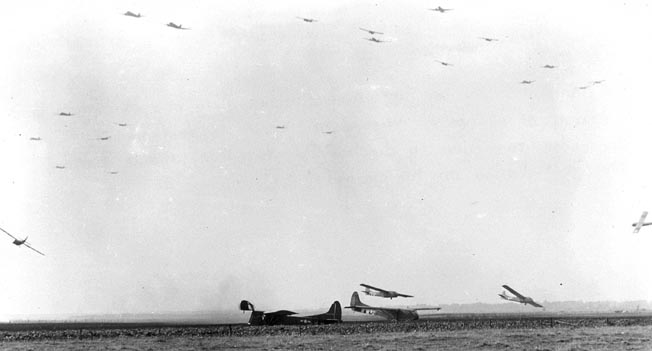
Norwood, along with the rest of the 101st Airborne, 82nd Airborne, and British 1st Airborne Divisions, dropped into Holland on September 17, 1944. The division artillery headquarters had learned a valuable lesson from D-Day in that it took too long for the unit to regroup since the men jumped from several different planes. For Operation Market Garden, the entire staff, including Norwood, would ride a glider into Holland. On the glider that day, Norwood reveled in the difference between D-Day and Market Garden. First, it was a daylight insertion instead of at night as D-Day had been. Second, it was a gorgeous and quiet day. “You wouldn’t know that there was a war going on when we landed,” said Norwood. “It was quiet. Everything went as it was planned.”
Arduous battles would continue through Holland and in the town of Son, where Norwood and another paratrooper named Bolton were given a bazooka and ordered to take out a German infantry unit approaching the Wilhelmina Canal. After Norwood and Bolton were settled on the northern bank of the canal, they could see the Germans approach and that they had tanks. Norwood also noticed that there was another small group of 101st paratroopers on the southern bank. Norwood and Bolton began to fire on the Germans, and the enemy tanks began to shoot in their direction. A paratrooper from the southern bank saw that a tank was firing on them, climbed up, and dropped a grenade inside the enemy armored vehicle. Fire from a second German tank quickly downed the heroic paratrooper. The German infantry retreated after the first tank’s destruction and Norwood returned to his radio operator duties.
The men had been told that if Operation Market Garden was successful, the war would be over by Christmas. Planning for proper winter gear had been slow. In Mourmelon, France, some men were still wearing their summer uniforms from Normandy. By December, Norwood turned in his equipment and waited for a new rifle. Before the new rifle was issued, the 101st and 82nd, the only reserve forces in the area, were rushed to Belgium. It was dark, so Norwood scrambled for any supplies he could find, procuring another rifle. They drove with the trucks’ headlights on (they were usually kept off for blackout conditions) and as fast as they could go, headed out for the next mission. On the way to the town of Werbomont, their orders were changed to proceed to the crossroads village of Bastogne. Norwood had never heard of it but saw a road sign and read, “Bastonga,” mispronouncing the name of the town that he would never forget.
Hitler had ordered a large offensive against the Allied forces in the West, and the ensuing fight became known as the Battle of the Bulge. Control of Bastogne, the center of a wheel with six roads leading from it, was key to the outcome. The 101st Division received orders to hold the town against repeated German assaults. They rushed to Bastogne as German forces surrounded the town. Norwood was fortunate enough to be billeted in an old Belgian Army barracks, but continuous German artillery bombardment and probing attacks took their toll.
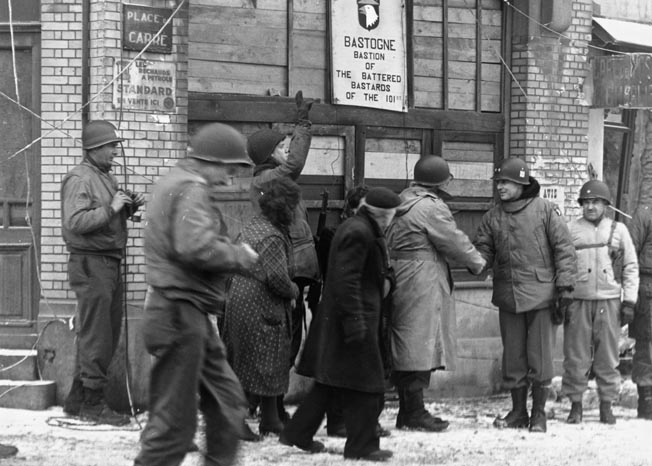
Norwood was injured in mid-December when German artillery fire struck the Jeep in which he was riding. The vehicle skidded off the road and flipped. When Norwood awoke, he was looking up at a nun. “I had no memory of how I got there; I just saw her face,” he recalled. He had injured his back but suffered no broken bones. He was in bed at Bastogne’s makeshift hospital for three or four days before he was released. Soon after his return, General McAuliffe, acting commander of the 101st in the absence of General Maxwell Taylor, was given an ultimatum by the Germans to surrender or face annihilation. His response was profound and exhilarating to the men in Bastogne; “NUTS!” Norwood still chuckles about that response to this day. He remembers McAuliffe as an eloquent man.
The Germans, in return, bombed McAuliffe’s headquarters, causing Norwood to hastily dig a foxhole. “It was miserable,” he reflected. “Just the cold was enough, let alone what was happening all around us. I swore then that I would never live somewhere where it snows. I never wanted to see another snowflake for as long as I lived.”
Finally, the weather broke, and supplies reached the men, greatly boosting their morale. Elements of General George S. Patton’s Third Army raised the siege of Bastogne on the day after Christmas 1944. Norwood saw the Third Army commander once his army entered Bastogne. “I can see him now and still feel the disgust. Rescue doesn’t exist in my vocabulary. We didn’t need to be rescued,” Norwood said. “Patton brought relief to the men in Bastonge, but not rescue.”
From Bastogne, the 101st was sent to Hagenau, France, where Norwood established communications. He ensured that communications from the front lines to division headquarters were intact. By the spring of 1945, Norwood was in Germany, and he could not help but notice the work ethic of the German people. “We would bomb their buildings one day, and the next the townspeople were out at daybreak, cleaning it up. Throughout France and Holland, I hadn’t seen that,” he remembered.
In April, Norwood was just outside Munich, Germany, when he heard that President Franklin D. Roosevelt had died. “I wondered who was going to lead now that he was gone,” Norwood reflected. “I felt like FDR was a great man, and I still think he was the greatest president our country has ever had.”
Norwood saw firsthand the horrors of a concentration camp as the 101st assisted in its liberation. He does not recall the name of the camp but speculates that it was Dachau. “Soldiers had been assigned to organize the people who were very ill and find transport to get them better medical attention,” he said. “I had read about the camps in the Stars and Stripes,but we didn’t get many details on what was really happening there.”
The Allied forces continued to push eastward, and Norwood stayed in Munich with artillery headquarters while the 101st moved onto Berchtesgaden, the home for many of Hitler’s elite and the Führer’s personal retreat called the Eagle’s Nest.
The 101st raced against the French 2nd Armored Division and the 7th Infantry Regiment, 3rd Division for the honor of securing the Eagle’s Nest. The 7th Infantry won the race, but the 101st occupied the buildings and celebrated there for three days. After climbing the mountain to reach the Eagle’s Nest, Norwood took no souvenirs, but he remembered how lovely it was there, looking out on the Bavarian Alps from Hitler’s own armchair.
Germany surrendered on May 8, 1945, and the soldiers quickly thought of going home. To do so, a soldier needed 85 points for service completed, according to the system used to determine who went home first. Points were awarded for months in service, months overseas, campaigns, and medals received. Norwood initially had 82 points and waited for five more to be added to his total. He was in the second wave to be sent home, departing from Marseille, France, aboard the transport USS Worcester Victory.He brought home the piece of his D-Day parachute, a Nazi flag he took from a German headquarters, Germany money, and a prized Luger pistol he had taken from a German captain at a roadblock in Briquebec, France.
After a two-week voyage, Norwood touched American soil in Massachusetts a day before Thanksgiving 1945, more than two years after he had left for war. He had multiple Thanksgivings that year, one in Massachusetts, one in Fort Bragg where he was discharged from the 101st, and one at home.
Two weeks after his return from the war, Norwood met Mozelle, a young girl with movie star looks whom he later told that she was going to be his wife. She said that was not possible, but he pursued her. After five months, she said “Yes” to his proposal. Norwood went back to his old job at the auto repair shop but just could not settle back into civilian life. He found it hard to be around men who had not fought for their country and could not get along with them.
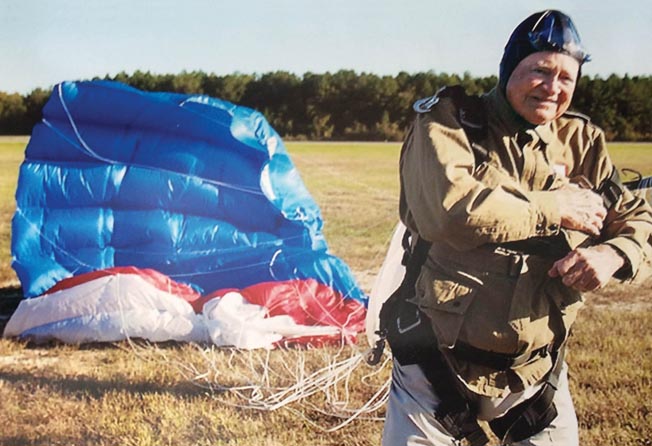
“My wife helped me with the anger I had toward men who didn’t fight. It was just a hard time,” Norwood remembered. He began what he calls “a gypsy life,” changing jobs many times and getting into construction. They moved around a lot and had three children, but Norwood never found a job that was “normal” to him. After he thought about it, he realized that his “normal” was military life, and so he reenlisted in 1959. He served in Korea, Turkey, Thailand, and in the United States as a radio operator and later a chief instructor at a signal school. He retired and settled in Virginia Beach, Virginia. He has volunteered with the DAV (Disabled American Veterans) for many years. “Patriotism is less now than what it was prior to World War II,” he observed. “It is important to tell these stories so we and our soldiers can become more effective in securing our country. I am glad I was able to serve.”
On his 90th birthday, Norwood completed a tandem jump to reconnect with his past. “Being a paratrooper is something I am proud of,” he said. “It’s different jumping tandem, but at least no one is shooting at you.” He jumped again in Virginia for the 71st Anniversary of D-Day and has returned to Europe three times, in 1966, in 1994 for the 50th Anniversary of D-Day, and in 2014 for the 70th Anniversary. During the 70th Anniversary visit, he was invited by the mayor of a town to stay in his personal residence as a guest of honor. He was also awarded the French Legion of Honor for his participation in the liberation of the country.
During the 1994 visit, Norwood was walking in Pouppeville and saw a familiar building. It was the bar where he was given shots of brandy on D-Day. He went in to have a drink and met a man who asked about his service. Norwood told him his D-Day story, and the man said, “My father was in this bar on D-Day. Will you please come to our home so you can meet him?” Norwood obliged and met the man, who remembered two American soldiers coming into the bar on D-Day.
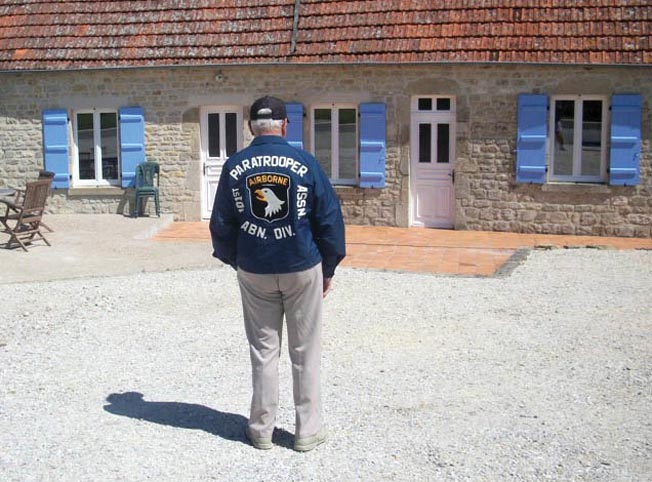
The bar was no longer there in 2014, but Norwood remembered where the man lived, so he paid him a visit. The father had since passed away, but with the help of an interpreter, Norwood explained who he was to the man who answered the door. It was the son, whom he had met 20 years earlier.
Connie Kennedy is a Tour Director for Stephen Ambrose Historical Tours. She is a life-long World War II enthusiast and volunteer with Honor Tours. She is the wife of Brent and mother of two children, Finn and Fallon.
